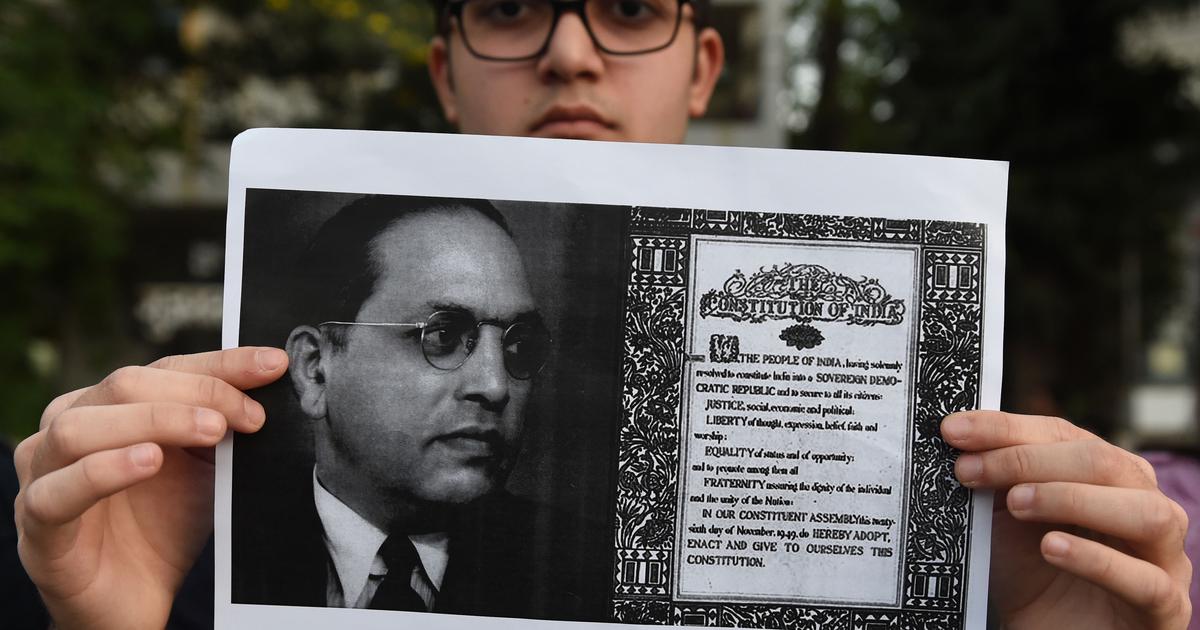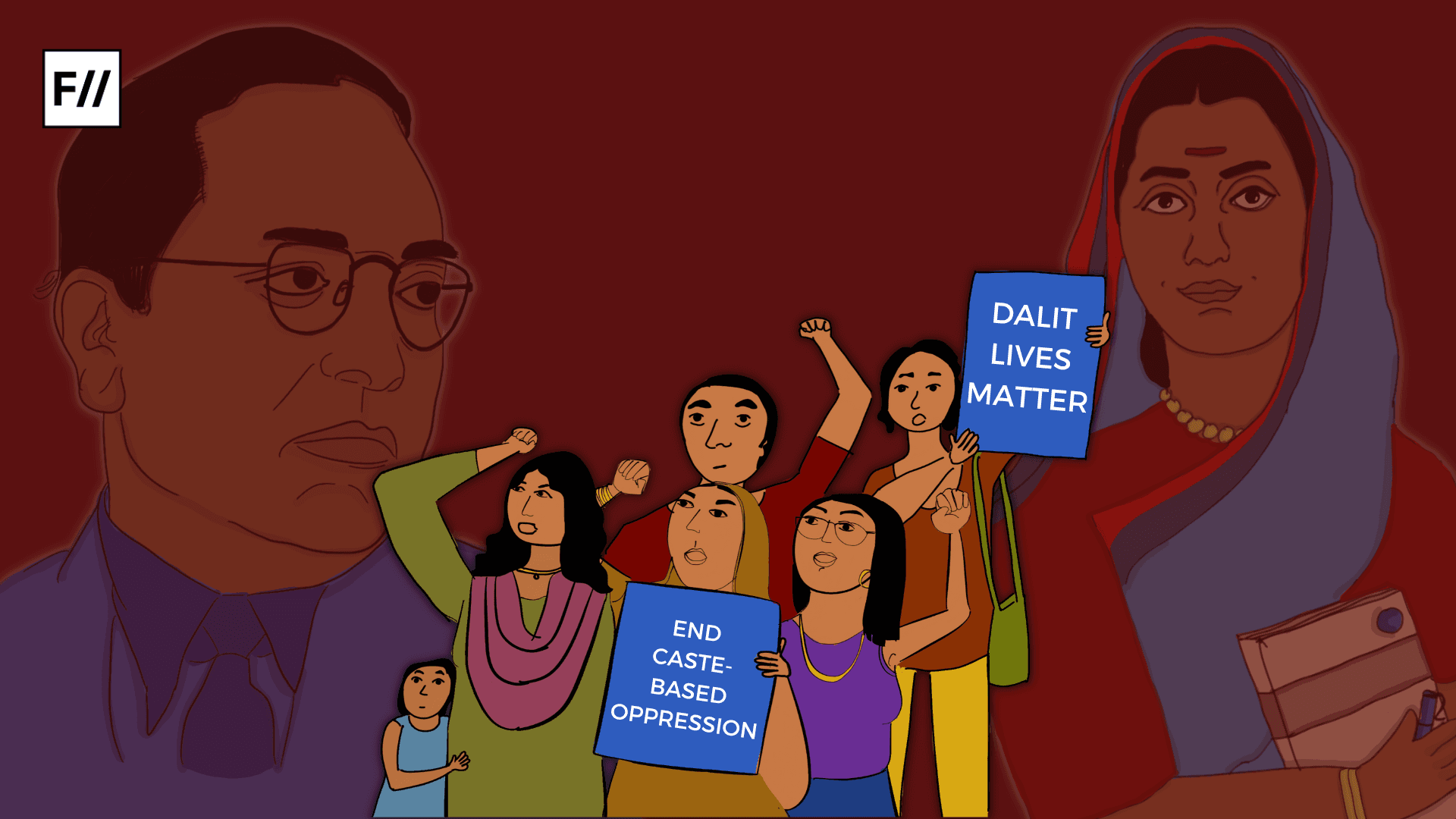Editor’s Note: This month, that is April 2020, FII’s #MoodOfTheMonth is Dalit History, where we invite various articles about historical moments in Dalit movements as well as Dalits (Ambedkar, Savitribai Phule) in history who have been part of the anti-caste movement in India. If you’d like to share your article, email us at pragya@feminisminindia.com.
Feminism is a constantly evolving ideology, keeping it at par with the issues that need to be addressed with every passing time. Over the centuries, there have been innumerable demands that were at the forefront of feminist movements, which were revived upon time based on the growing demands and developments in society. This can be best understood when read in conjunction with the demands fought for in first wave feminism to till now. Some demands, even if claimed to have been achieved, is still not accessible to all the women around the globe. This ‘evolution’ is what makes feminism more inclusive to be associated with and understood through the lens of any other form of discrimination.
Thus intersectionality has become a key component of feminism. The struggle for freedom is powered by minds that are deprived of freedom; those that know the value of freedom more than anyone else. Hence, feminism has evolved over time as an inclusive platform to fight for the demands of myriad marginalized groups. In other words, it can be safely said that women were the most oppressed in all the discriminated groups, hence the inclusiveness has come handy.
Reading Dr. B.R. Ambedkar, one cannot help but draw parallels to his views on Dalit reformation to women’s equality. Babasaheb is a feminist himself and has been very vocal about the issues faced by women and the path towards their empowerment. In his book “Castes in India” he emphasizes the sorry state of Shudra women compared to Brahmin women by the following words, “A Brahmin woman after childbirth is up to reclaiming her day job whereas a Shudra woman has no place to go.”
Ambedkar was stating the obvious, as the women in top echelons of the society are well off than those at the bottom, which is very much true to date. However, he has time and again captured the ill fate of Brahmin women too in his writings. He had come down heavily on the much revered Manu Smriti for its pivotal role in discriminating Dalits, Shudras and women, even if born Brahmin. The venom injected through the Manu Smriti in the form of graded inequality had cost women heavily as they were banned from a self-respectful life, not just unequal but unjust.
Some of the gems from the script shall be looked into briefly to understand the miserable position allotted to women in the Hindu religion;
“Na asti strinam…” – 9/18: Vedic mantras are not to be recited by women as they are impure and represent falsehood.
“Trinsha…” -9/93: In case of any problem in performing religious rites, males between the age of 24 and 30 should marry a female between the age of 8 and 12.
“Bharataram……” – 8/370: In case a woman, proud of her greatness, violates her duties towards her husband, the king shall arrange to have her thrown before dogs at a public place.
Also read: Too Radical For Savarnas: Anti-Caste Feminist Legislation By Dalit Women & Ambedkar
The Problem That Lies Within
It is generally said, “Women are women’s best enemies”. Though it is yet another gimmick by the patriarchy to derail the feminist movement and divert the attention from the more dangerous perpetrators i.e men, the situations where women were not supportive to fellow women cannot be ignored. The patriarchal mindset is so ingrained that some women are actually, but sadly misogynists. But one must also care to look behind the reasons for women holding those ideologies. That is what they have been taught from childhood and that is the ‘normal’ for them in this male privileged world. Though some women have had the opportunity and exposure to come out of it, the ones who did not cannot be held accountable wholly.
Ambedkar while advocating separate electorates for Dalits, did not shun away from stating, “Dalits will not vote for Dalits over Hindus, for they have a strong belief that Hindus are superior and more eligible than the untouchables.” This viewpoint within the community is, of course, to be eliminated and it cannot be stated as the only and foremost problem. The grounds on which this perspective is based is the manipulation they faced from time immemorial. Ambedkar who has relentlessly worked within the community could clearly see the root of the problems. He has shown us the need to uproot the evil without passing the blame on the victims as an easy way to thwart corrective measures. Similarly, it is important for feminists to not get discouraged by the ignorant acts of misogynist women but keep moving forward in the path of Babasaheb.
In his book, “Waiting for a Visa”, Ambedkar enlists a few incidents of discrimination that happened to him and others. He reiterates the fact that untouchables are considered untouchables across all religions. Even a Parsi and Muslim thinks low of an untouchable though they don’t practice Hinduism. Similarly, women are considered “inferior” across all religions and every religion has its own way of discriminating against women. The only principle that unifies all religions in the world is the fact that they have all failed women miserably.
Also read: Dr. Ambedkar & The History Of His Resistance Against The Hindu Right Wing
Ambedkar, the reformist has left his life and acts as an open book for interpretations. His advocacy for Reservation still holds as valid grounds for advocating Women’s Reservation. He cannot be put in a box only as a Dalit leader, but a visionary who lived for all the marginalized. Whatever be the grounds of discrimination, we can take a leaf from his book to fight against it untiringly.
Aswini is a learning feminist evolving through experience and opinions. Questions everything. Never settles for inequality. Loves to travel. Adding voice to her pen. You can follow her on Facebook.
Featured Image Source: Scroll





Fair analysis but why do you have to write about Manusmriti, I can understand you want to break through chains of oppression but why do you have to malign a noble text to achieve that purpose? Please forgive the ignorance of our people, over the years, maybe there is no making up for it now! But then again, why make it worse by cherry picking verses from an ancient book to prove your point? It may be fashionable but I’m really sorry that’s just ignorant…